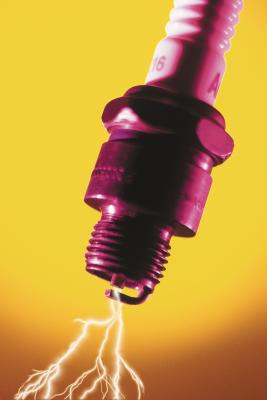
A wide range of engine performance and fuel economy problems are caused by worn out spark plugs. Spark plugs are an integral part of the engine's electrical system and worn plugs puts stress on other engine components, often leading to engine failure or expensive repair bills to replace damaged engine parts.
Each spark plug must be removed with a plug wrench or ratchet and socket for visual inspection to determine if excessive wear is causing poor engine-running symptoms. Examination of used spark plugs reveals signs of wear. Looking closely at the side and central electrodes helps determine it they need to be replaced to keep your engine running smoothly and efficiently. A build up of electrically conductive metallic deposits on an old plug's electrodes can cause a short circuit from lowered shunt resistance. This condition is called shunting, or shunt firing.
Fresh, or normal spark plugs operating at the correct temperature in a properly running engine have a certain appearance. They look similar to newer plugs with bands of deposits on the sides of the plug's ceramic insulator. It's important to distinguish between worn out plugs and plugs with some life left in them when diagnosing an engine's symptoms. You can rule out excessive wear as a cause of poor engine performance if the spark plugs have a normal, unworn appearance. A lack of excessive deposits on the plug's electrodes and a light tan to gray color are good signs.
Spark Plugs that are worn out and near the end of a normal life span will have rounded side electrodes and a short central electrode. The engine loses horsepower, misfires and starts hard with worn plugs. Double voltage may be required to fire the plugs, resulting in reduced acceleration performance. Lowered gas mileage is a leading symptom of worn out spark plugs. Damaged secondary ignition parts such as plug wires, distributor cap and ignition coil are signs of worn plugs.
A worn out spark plugs will not fire properly due to a crusty buildup of combustion deposits on the electrodes. Deposits on old plugs may bridge the electrode gap, preventing the plug from firing. A blistered, worn plug with melting and corrosion of the electrodes can cause engine knocking and pinging. A worn out plug with a cracked or chipped core nose may not fire, causing a dead cylinder. Dead cylinders are symptoms of broken, bent or corroded plugs due to excessive wear.